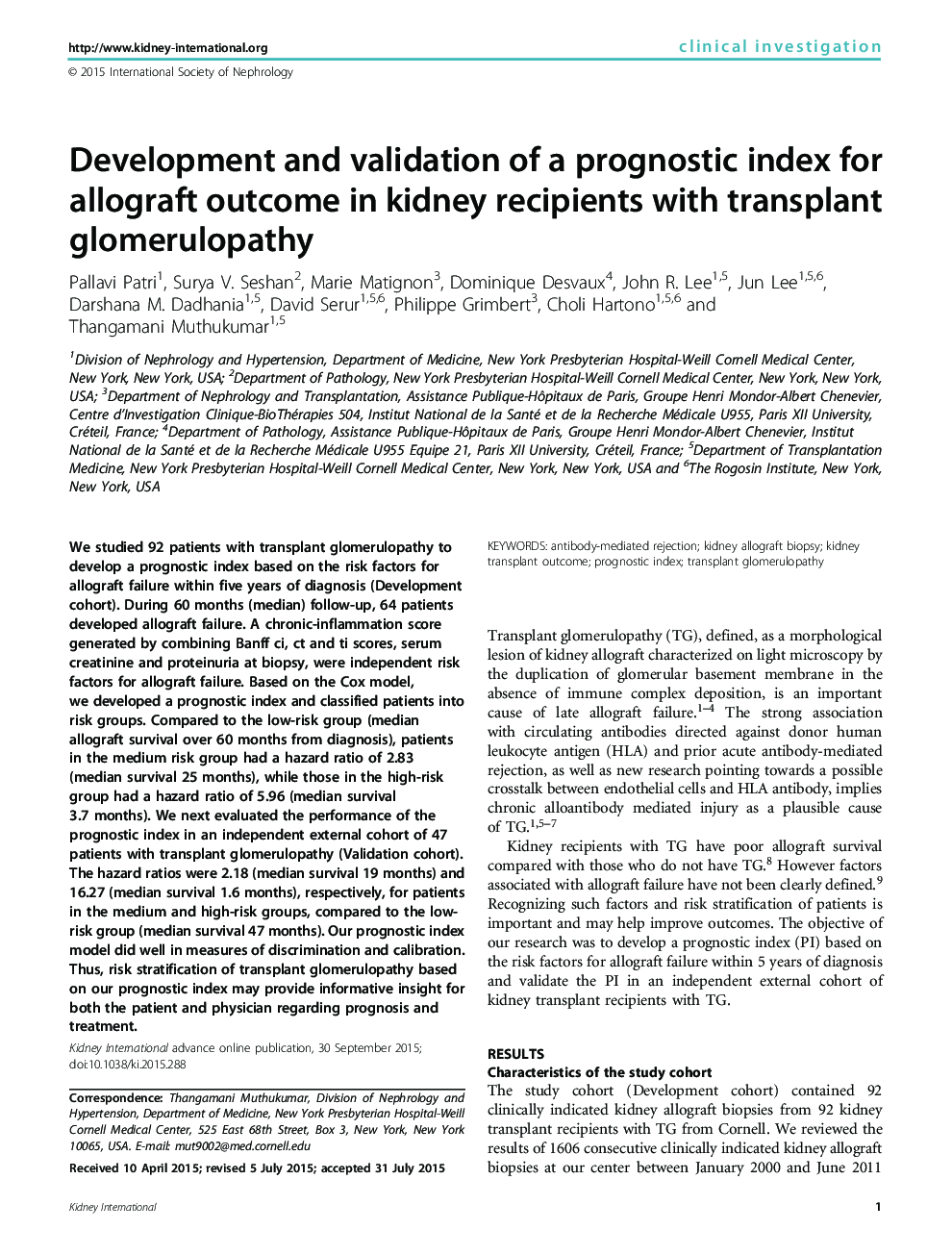| Article ID | Journal | Published Year | Pages | File Type |
|---|---|---|---|---|
| 6163321 | Kidney International | 2016 | 9 Pages |
Abstract
We studied 92 patients with transplant glomerulopathy to develop a prognostic index based on the risk factors for allograft failure within five years of diagnosis (Development cohort). During 60 months (median) follow-up, 64 patients developed allograft failure. A chronic-inflammation score generated by combining Banff ci, ct and ti scores, serum creatinine and proteinuria at biopsy, were independent risk factors for allograft failure. Based on the Cox model, we developed a prognostic index and classified patients into risk groups. Compared to the low-risk group (median allograft survival over 60 months from diagnosis), patients in the medium risk group had a hazard ratio of 2.83 (median survival 25 months), while those in the high-risk group had a hazard ratio of 5.96 (median survival 3.7 months). We next evaluated the performance of the prognostic index in an independent external cohort of 47 patients with transplant glomerulopathy (Validation cohort). The hazard ratios were 2.18 (median survival 19 months) and 16.27 (median survival 1.6 months), respectively, for patients in the medium and high-risk groups, compared to the low-risk group (median survival 47 months). Our prognostic index model did well in measures of discrimination and calibration. Thus, risk stratification of transplant glomerulopathy based on our prognostic index may provide informative insight for both the patient and physician regarding prognosis and treatment.
Related Topics
Health Sciences
Medicine and Dentistry
Nephrology
Authors
Pallavi Patri, Surya V. Seshan, Marie Matignon, Dominique Desvaux, John R. Lee, Jun Lee, Darshana M. Dadhania, David Serur, Philippe Grimbert, Choli Hartono, Thangamani Muthukumar,
